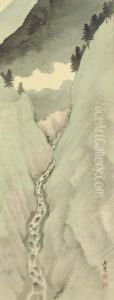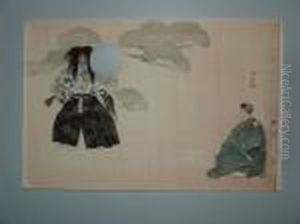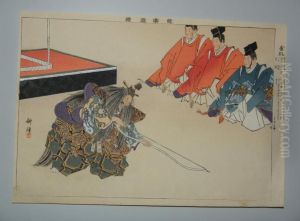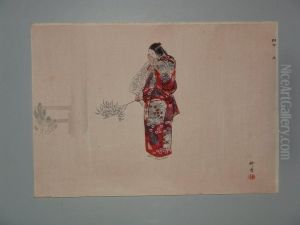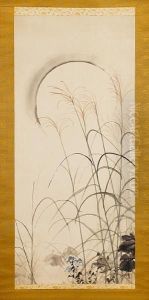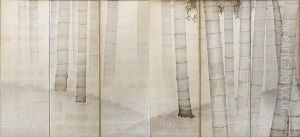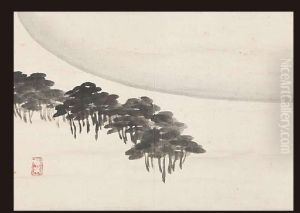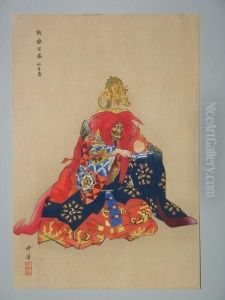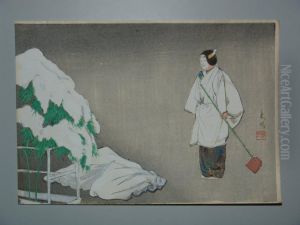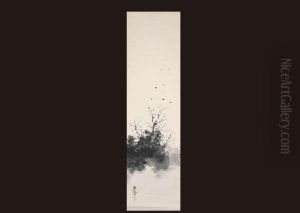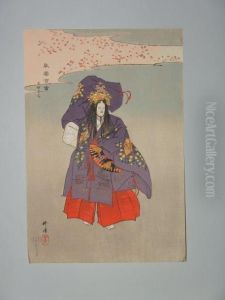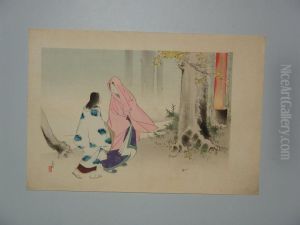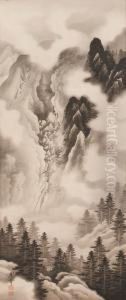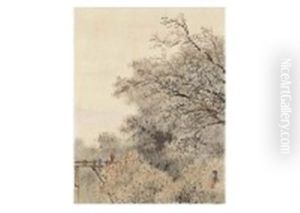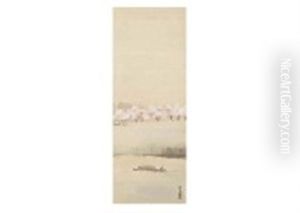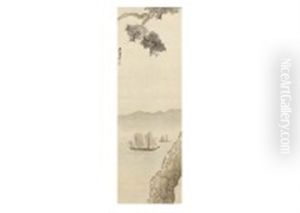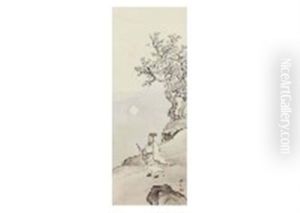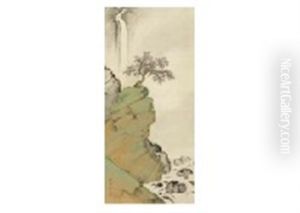Terazaki Kogyo Paintings
Terazaki Kogyo was a prominent Japanese artist known for his significant contributions to the Nihonga style, a term used to describe Japanese paintings made in accordance with traditional techniques and aesthetics. Born in the late Edo period, Kogyo's work bridges the transition from the traditional Edo era to the modernizing Meiji era, reflecting changes in Japanese society and culture.
Kogyo's early life was marked by his passion for art, and he was particularly influenced by the works of the earlier Edo period artists. His dedication to the Nihonga style was not only a reflection of his admiration for traditional Japanese art but also a statement of his belief in the importance of preserving these techniques amidst the rapid modernization of Japan during the Meiji Restoration.
Throughout his career, Kogyo focused on themes that were deeply rooted in Japanese tradition, such as landscapes, flowers, and scenes from Noh theatre, a classical Japanese musical drama that has been performed since the 14th century. His works are characterized by their delicate and precise detail, a hallmark of traditional Japanese art. Kogyo was especially known for his ability to convey the serene beauty and subtle emotions of Noh theatre, capturing the essence of its performances in a way that was both innovative and deeply respectful of its traditions.
Kogyo's contributions to the Nihonga movement were significant. He was involved in various exhibitions and took part in cultural activities that aimed to promote traditional Japanese art forms during a time of significant cultural shift. His efforts helped to ensure that traditional Japanese painting techniques and subjects remained relevant, even as Western styles of art became increasingly influential in Japan.
Terazaki Kogyo passed away in 1919, but his legacy lives on. His works are celebrated for their contribution to the preservation and development of the Nihonga style, and they continue to be admired for their beauty and cultural significance. Kogyo's art not only reflects the aesthetic values of his time but also serves as a bridge between the past and the present, offering insights into the enduring appeal of traditional Japanese art.
